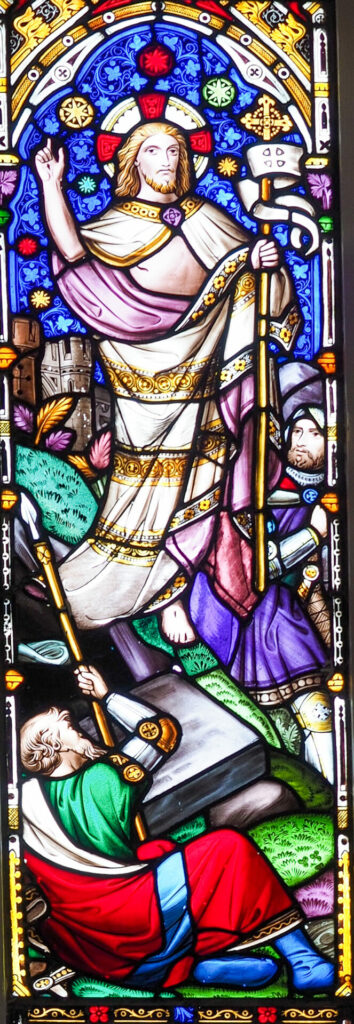A few years ago, when my family and I were living in southern WA, I purchased a new rear light for my bicycle. The next Thursday, with the new brand light correctly installed (or so I thought) I set off for my regular group ride on our usual route, including a stint, ridden at some pace, along a local main road. With all due respect to the local council in that part of WA, it was not the smoothest of roads in places, and as we were riding along in the bunch, there was a sudden noise, which sounded suspiciously like something falling off a bike and breaking. To my horror, I realised it was my new light! I pulled out of the peloton, intending to go back and salvage what I could, but one of the group shouted out, “Forget about it, Theo, it’s completely stuffed.” … Or, at least, that was the gist of what he said! So, I kept riding.
Later that day, though, I thought that I would at least go and have a look for it. Miraculously, I found it. Even more miraculously, even though it was in pieces, it was still flashing. I managed to put it back together. My rear light wasn’t broken after all. It came back from the dead … well, sort of. It functioned for quite some time, but eventually the toll of that traumatic experience was too much and it gave up the ghost.
Easter is all about celebrating the resurrection of Jesus. So, to use this simple illustration as a starting point, is the resurrection of Jesus kind of like my rear bike light? Jesus didn’t actually die, he just got banged up a bit on the cross. In the 1990s there was a popular theologian, who suggested that Jesus didn’t actually die on the cross. Here’s my paraphrased version of that particular conspiracy theory. It goes something like this: Jesus was indeed crucified, but he didn’t really die on the cross, having been given a special sleeping draft, which slowed his heart-rate to almost zero and made him appear to be dead. The Romans didn’t properly check that he was dead. After he was placed in the tomb, his disciples came secretly at night, administered the antidote and revived him in the tomb. Then he appeared to a few people, to convince them he was actually resurrected, before catching a ship across the Mediterranean Sea to the South of Spain, eventually making his way to a lovely villa in the South of France, where he lived out the rest of his days surrounded by grape vines, eating the 1st century equivalent of baguettes.
There are a few problems with this theory. The main problem, apart from the fact that there is no record of a sleeping draft existing in the first century that could slow the heart so much as to be undetectable and mimic death, is that when the Romans wanted someone dead, they made sure of it. They had perfected the art of crucifying people. There was no getting down from a cross. They had identified Jesus as a threat to the Empire, even though he believed in non-violence. The Romans didn’t make mistakes with their executions.
But if a Palestinian Jew named Jesus really did die on a Roman cross around 30 AD, which is what the historical evidence suggests, what sense do we make of the Easter Day reading from the Gospel according to Mark, chapter 16, verses 1–8?
Mark’s Gospel was the first of the four Gospels to be written down. Although Matthew, Luke and John’s Gospel contain quite old material, they were all compiled later. Paul’s letters are actually the oldest source we have, but of the four Gospels, Mark’s is the oldest; and the original ending, the ending that most scholars believe is the one that was first written, is very unsatisfactory.
Three women, Mary Magdalene, Mary the mother of James, and Salome, go to anoint the body of Jesus, to anoint the body of their friend, according to the burial rights of the Jewish people. Filled with grief, but also with the kind of resolute strength that grief can also bring, they go to say a final goodbye to their friend, to honour his memory and to give thanks for his life. It is a custom they are familiar with.
However, things do not go according to plan. Something odd happens. They have the strangest experience. They encounter a young man at the tomb, who tells them they Jesus of Nazareth is not there, that he has been raised, and that they should go and tell Peter and the others to return to Galilee, where they will see him.
So, what do they do, according to the original ending of Mark’s Gospel? They flee from the tomb in terror and amazement and say nothing to anyone, for they were afraid. How do we know about this experience, if they said nothing?
Because at some point they stopped running.
The remarkable thing about the story of the resurrection is that it exists at all. At some point these frightened women stopped running and began to try and make sense of their experience: that the body of Jesus was not there in the tomb. They began to hope: to hope that perhaps there was something more to life, hope that the spiritual life was real, that the God of love lets nothing of beauty disappear forever.
This is my hope and the way I make sense of the resurrection tradition: that the God of love lets nothing of beauty disappear forever.
The Reverend Dr Theo McCall
School Chaplain

